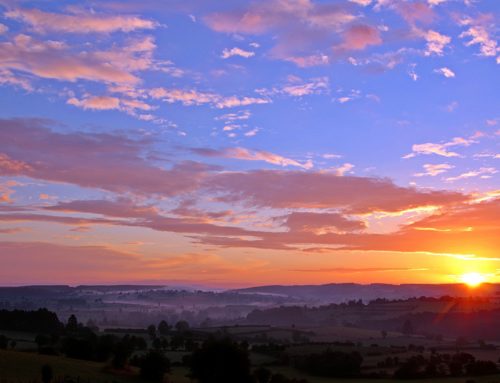Let me invite you to cast your mind back to Holy Week and Easter last year. We were in the midst of lockdown, filming services, and participating in worship on-line. It was an Easter like no other and we hope that we won’t have to do that again. However, it’s helpful to reflect on that in order to more fully appreciate the freedom we have, and the wonderful opportunity to gather in person this year.
On Wednesday night we met in a candle-lit church seated around a rough wooden cross laid out flat. Some of us held a candle and one by one told the story of the disciples, and the impact that Jesus had on their life. And after telling our story we placed our candles on the cross until it was a blaze of light.
Gathered around a cross lit by candles reminded us of Jesus’ words, that he is the Light of the World, a light no darkness can extinguish. But we also know how fragile a candle’s flame can be – so easily doused. In a similar way we know how fragile trust can be, how quickly trust can be eroded and a friendship strained or torn in pieces by a word, or action that betrays that trust. And so over the rest of the service we read passages from the Bible that told of Jesus’ closest friends, denying, betraying, or running away in fear or self-preservation, and each time a candle was extinguished and the light grew dim until the cross was completely dark and forlorn.
Holy Week is a time when we hold before God all who feel lost or abandoned, all who feel betrayed and abused. Perhaps it would be a good week for the secular calendar to highlight the rise of domestic violence especially during this pandemic, or the way women are treated in politics, and in the work place. Holy Week reminds us that the church is called to participate in God’s mission in the world to heal the broken-hearted and bind up their wounds, whether they be physical or emotional wounds, but also to advocate for better safe-guards, policies and programs designed to foster a healthier culture in homes, in sport, in politics and business.
Holy Week is first and foremost about God’s work of reconciliation, God in Jesus entering into the depths of our brokenness in order to lead us to wholeness. In the Tenebrae Service I mentioned earlier everything seems to end in darkness where the Paschal Candle is removed and we sit in silence, but it is into that silence that the Paschal Candle is returned and placed on the cross, providing a glimmer of light, a foretaste of what is to come on Easter Day. It’s a reminder of those powerful words in John’s Gospel …the light shines in the darkness . . .and the darkness has not overcome it!
Easter reminds us that we in the Church are called to be good news people – shining the light of God’s love into the darkness of our world to bring warmth, and healing, hope and joy into people’s lives, by first of all sharing their darkness, listening to their pain, and seeking to work with them to forge a new way, a way out of the tomb.
Mark’s Easter Gospel for me is one of the most powerful and realistic accounts of the resurrection. It ends with the women coming to the tomb worrying about how to push the great stone away in order to anoint Jesus’ body, and to their shock they find the tomb empty and an angel announcing that Jesus has been risen! What do they do? What would you do? They fled in fear and told no-one!
It seems like a tragic ending as though fear has the last word, but Mark does this deliberately knowing that in fact the women overcame their fear and shock and did speak. What Mark wants is for us to turn back to the beginning of the gospel and start again being called with the disciples to follow Jesus not with fear but faith.
Peter





